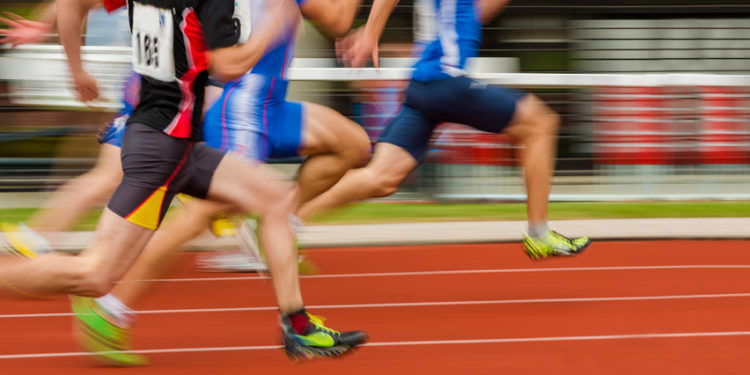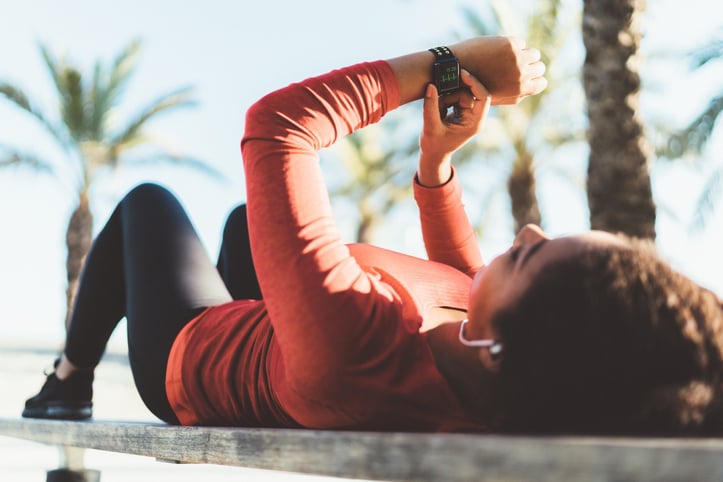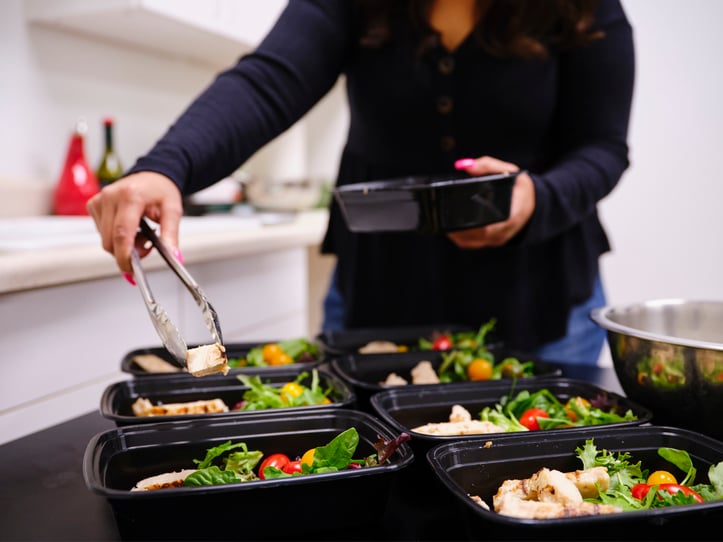Are you looking for that competitive edge? You might consider ways of stimulating your nervous system. The central governor model is based on the premise that the nervous system strives to maintain homeostasis to minimize mental and physical fatigue by limiting exertion.
Research has shown that limits on endurance, strength, speed and power can be overridden by integrating psychological, nutritional and physical interventions.
Here the discussion will be on current trends for hacking the nervous system for sports performance enhancement through the mind-body connection, nutrition, tool assisted manual therapy (TAMT) and post-activation potentiation (PAP).
You can find more of these topics within our strength and conditioning course bundle!
Nervous System Biohacks
Mind-Body Techniques
Kinesthetic motor imagery (KMI) is a technique used by athletes to acquire and refine motor skills. KMI has been shown to improve motor performance without overt motor output. Theoretically, KMI leads to internal activation of anticipatory images of action effects. This mechanism allows for improving motor performance solely based on internal emulation of action. The emulation mechanism is implemented in brain regions that partially overlap with brain areas involved in overt motor performance, including the posterior parietal cortex, cerebellum, basal ganglia and premotor cortex. (Filgueiras, A., et al. 2017) (Ridderinkhof, K. R., & Brass, M. 2015)
Nutrition
Mouth Rinse
Carbohydrate mouth rinsing has been shown to improve endurance performance for exercise lasting approximately 1 hour in duration. The mechanisms responsible for performance gains are still not fully understood. There is no alteration in plasma insulin concentration, blood glucose concentration or rates of macronutrient oxidation.
It has been postulated that central mechanisms may be responsible, likely related to an increase in corticomotor excitability and central motor drive to exercising muscle. The response to ingested carbohydrate begins in the mouth via specific carbohydrate receptors and continues in the gut via the release of hormones that influence substrate metabolism.
Stimulation of carbohydrate taste receptors within the oral cavity improves performance by increasing central drive to the locomotor muscles. In addition, a cephalic phase insulin response contributes to the improvement in exercise performance by enhancing glucose uptake by the exercising muscles, thereby helping to maintain high rates of carbohydrate oxidation in a manner similar to that which occurs when carbohydrate is ingested.
Cold drinks or slushies can also enhance performance, especially in conditions of thermal stress. (Burke, L. M., & Maughan, R. J. 2015) (de Ataide e Silva, T., et al. 2013) (Murray, K. O., et al. 2018)
Caffeine (Low Dose)
Caffeine is a popular ergogenic supplement. The majority of research has examined the ergogenic effects of moderate to high caffeine doses (5–13 mg/kg). These caffeine doses have profound effects on the responses to exercise at the whole-body level, but results are variable and, in some cases, there are undesirable side effects. Low doses of caffeine (<3 mg/kg, ~200 mg) are also ergogenic in some exercise and sport situations. Lower caffeine doses do not alter the peripheral whole-body responses to exercise; improve vigilance, alertness, and mood and cognitive processes during and after exercise; and have minimal, if any, side effects. The ergogenic effect of low caffeine doses appears to result from alterations in the central nervous system. The responses to low doses of caffeine are also variable and athletes need to determine whether the ingestion of ~200 mg of caffeine before and/or during training and competitions is ergogenic on an individual basis. (Spriet, L. L. 2014)
Caffeine (physiologic dose)
Higher doses of caffeine (3-6 mg/kg) have also been shown to be an effective ergogenic aid for aerobic and anaerobic exercise. Studies indicate that ingestion of caffeine (e.g., 3–9 mg/kg taken 30–90 min before exercise) can spare carbohydrate use during exercise thereby improving endurance exercise capacity. In addition to the positive effects on endurance performance, caffeine has also been shown to improve repeated sprint performance, thereby benefiting anaerobic athletes. Studies examining caffeine’s ability to increase maximal strength and repetitions to fatigue are mixed in their outcomes, but worth consideration. (Kerksick, C. M., et al. 2018)
Peppermint
Peppermint is an herb with analgesic, anti-inflammatory, antispasmodic, antioxidant, and vasoconstrictor effects. It has been shown to relax bronchial smooth muscles, increase brain oxygen concentration and decrease blood lactate levels. Meamarbashi demonstrated the effectiveness of peppermint essential oil on exercise performance, respiratory function variables, systolic blood pressure, heart rate, and respiratory gas exchange parameters. The stimulatory effect of peppermint on the CNS is one proposed mechanism. (Meamarbashi, A., & Rajabi, A. 2013) (Meamarbashi, A. 2014)
Tool Assisted Manual Therapy (e.g., Self Myofascial Release (SMR))
Current literature measuring the effects of SMR suggests that it may be an effective intervention for enhancing flexibility (acute and chronic), balance, sports performance and recovery, and reducing DOMS. The proposed mechanisms include: Mechanical, neurophysiological, endocrine and anti-inflammatory.
Using an assessment, such as the overhead squat, range of motion testing and manual muscle testing, can be an effective way of targeting the best areas to apply TAMT based on one’s unique impairments. Common impairments include a combination of over- and underactive muscles and joint dysfunction. Regardless of whether a muscle is short (overactive) or “locked long” (underactive) it can potentially house taught palpable bands known as trigger points. TAMT can be used to reduce or desensitize trigger points in both scenarios. This should be followed by lengthening those muscles that were identified as being short (e.g., static stretch) and activating (e.g., positional isometrics) those muscles identified as being “locked long. (Cheatham, S. W., et al. 2015)
what is Post-Activation Potentiation?
Post-activation potentiation (PAP) is an acute excitation of the neuromuscular system following some form of exercise. This acute excitation has been shown to improve subsequent explosive performances such as the countermovement jump and sprint speed.
An example of PAP would be performing Back Squat - 3x3 @ 80% 1RM several minutes before performing an explosive exercise such as a jump or sprint. The PAP theory purports that the contractile history of a muscle influences the mechanical performance of subsequent muscle contractions. PAP has been shown to improve jumping, sprinting, throwing, kicking, as well as change of direction speed performances (Docherty, D., & Hodgson, M. J. 2007) (Lorenz, D. 2011)
PAP Mechanism
PAP works via a combination of intra- and inter-muscular neurophysiological mechanisms. There are three which are thought to provide the largest effects:
- Phosphorylation of the regulatory light chains: Increased sensitivity of the myosin-actin interactions, which leads to an increase in the cross-bridge cycling rate. This results in a shifting of the force-velocity curve to the right, allowing for faster movements with higher loads.
- Potentiated Hoffman Reflex response: The H-Reflex is a measure of the efficacy of synaptic transmission. It is associated with higher excitability.
- Pennation angle of the muscle fibers: A decrease in the pennation angle of the muscle means more force can be transmitted through the tendon and bone upon contraction.
Practical Applications
| Strategy | Guidelines |
| Imagery | ● Perform Progressive Relaxation
Slowly tense and then relax each muscle group. Start by tensing and relaxing the muscles in the toes and progressively working up to the neck and head. Tense muscles for about five seconds and then relax for 30 seconds. Repeat. ● Choose your imagery perspective or “imagery camera.” The internal perspective involves seeing yourself from inside your body looking out, as if you were actually performing your sport. The external perspective involves seeing yourself from outside your body, like on video. ● Control/Practice imagining what you want to achieve (e.g., the performance goal). ● Multisensory: Duplicate the sights, sounds, physical sensations, thoughts, and emotions that you would experience in an actual competition. ● Speed: Slow motion is effective for focusing on technique. When first starting to work on technique in imagery, slow the imagery video down, frame by frame to see yourself executing the skill correctly. As you see and feel yourself performing well in slow motion, increase the imagery speed until you can perform well in “real-time.” ● Be realistic ● Practice at least 3-4 x/week |
| Carbohydrate Mouth Rinse | ● 6.4% maltodextrin or glucose solution
● 10 second rinse (not swallowed) ● 4-12 times during the event |
| Caffeine | Physiological dose 3-6mg/kg about 60 minutes prior to training or event.
Low dose ≤3 mg/kg, ~200 mg) taken before exercise (e.g., chewing gum source). |
| Peppermint Oil | Consume one bottle of mineral water (500 ml) per day, containing 0.05 ml peppermint essential oil for ten days prior to the event. |
| Tool Assisted Manual Therapy (TAMT) | 1. Perform an overhead squat movement assessment.
2. Use assessment results to identify overactive and underactive muscles. 3. Perform 30 seconds TAMT on overactive muscles followed by 30 seconds static stretch. Perform 30 seconds TAMT on underactive muscles followed by positional isometrics: 5 seconds each at 25%, 50%, 75% and 100% maximum voluntary contraction.. |
| Post-Activation Potentiation (PAP) | Perform active warm-up commensurate with the sport/activity.
Lower Body example: Back Squat - 3x3 @ 80% 1RM Rest 60 seconds Box Jump (18 to 30 inches) - 3x5
Upper Body example: Bench Press - 3x2 @ 85% 1RM Rest 60 seconds Plyo Push-Up (use 6 to 10 inch blocks) - 3x3
Sled Push and Sprint example: Sled Push - 5x10 yards (sled load 1.5-2 times body weight) Sprint - 5x20 yards (immediately after Sled Push; let go of the sled and start sprinting) |
References
- Burke, L. M., & Maughan, R. J. (2015). The Governor has a sweet tooth–mouth sensing of nutrients to enhance sports performance. European journal of sport science, 15(1), 29-40.
- Cheatham, S. W., Kolber, M. J., Cain, M., & Lee, M. (2015). The effects of self-myofascial release using a foam roll or roller massager on joint range of motion, muscle recovery, and performance: a systematic review. International Journal of Sports Physical Therapy, 10(6), 827–838.
- de Ataide e Silva, T., Di Cavalcanti Alves de Souza, M. E., de Amorim, J. F., Stathis, C. G., Leandro, C. G., & Lima-Silva, A. E. (2013). Can carbohydrate mouth rinse improve performance during exercise? A systematic review. Nutrients, 6(1), 1-10.
- Docherty, D., & Hodgson, M. J. (2007). The application of postactivation potentiation to elite sport. International journal of sports physiology and performance, 2(4), 439-444.
- Filgueiras, A., Conde, E. F. Q., & Hall, C. R. (2017). The neural basis of kinesthetic and visual imagery in sports: an ALE meta− analysis. Brain imaging and behavior, 1-11.
- Kerksick, C. M., Wilborn, C. D., Roberts, M. D., Smith-Ryan, A., Kleiner, S. M., Jäger, R., ... & Greenwood, M. (2018). ISSN exercise & sports nutrition review update: research & recommendations. Journal of the International Society of Sports Nutrition, 15(1), 38.
- Lorenz, D. (2011). Postactivation potentiation: an introduction. International Journal of Sports Physical Therapy, 6(3), 234–240.
- Meamarbashi, A. (2014). Instant effects of peppermint essential oil on the physiological parameters and exercise performance. Avicenna journal of phytomedicine, 4(1), 72.
- Meamarbashi, A., & Rajabi, A. (2013). The effects of peppermint on exercise performance. Journal of the International Society of Sports Nutrition, 10(1), 15.
- Murray, K. O., Paris, H. L., Fly, A. D., Chapman, R. F., & Mickleborough, T. D. (2018). Carbohydrate mouth rinse improves cycling time-trial performance without altering plasma insulin concentration. Journal of sports science & medicine, 17(1), 145.
- Noakes, T. D., Peltonen, J. E., & Rusko, H. K. (2001). Evidence that a central governor regulates exercise performance during acute hypoxia and hyperoxia. Journal of Experimental Biology, 204(18), 3225-3234.
- Ridderinkhof, K. R., & Brass, M. (2015). How Kinesthetic Motor Imagery works: a predictive-processing theory of visualization in sports and motor expertise. Journal of Physiology-Paris, 109(1-3), 53-63.
- Spriet, L. L. (2014). Exercise and sport performance with low doses of caffeine. Sports medicine, 44(2), 175-184.
















